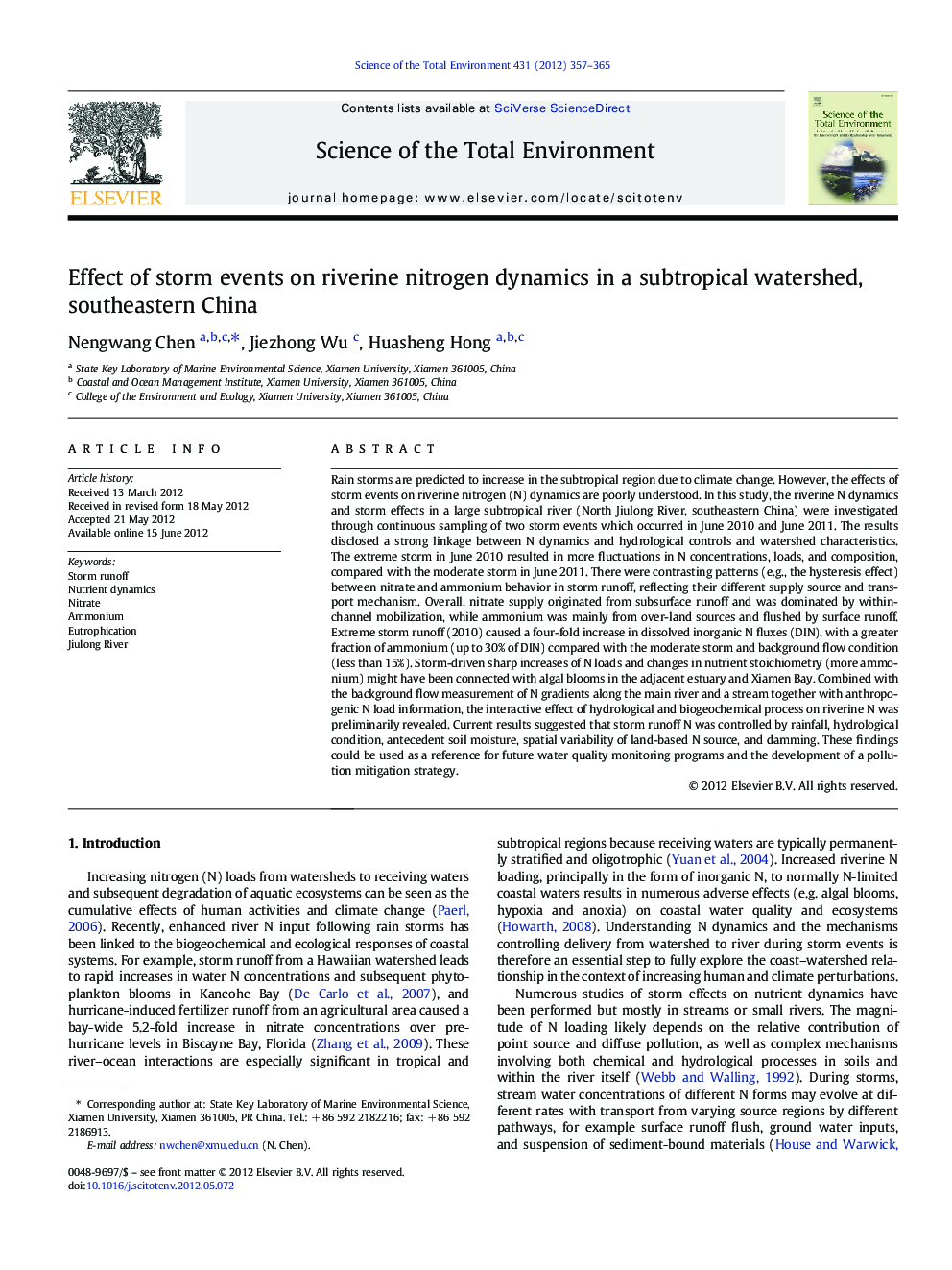| Article ID | Journal | Published Year | Pages | File Type |
|---|---|---|---|---|
| 6333810 | Science of The Total Environment | 2012 | 9 Pages |
Rain storms are predicted to increase in the subtropical region due to climate change. However, the effects of storm events on riverine nitrogen (N) dynamics are poorly understood. In this study, the riverine N dynamics and storm effects in a large subtropical river (North Jiulong River, southeastern China) were investigated through continuous sampling of two storm events which occurred in June 2010 and June 2011. The results disclosed a strong linkage between N dynamics and hydrological controls and watershed characteristics. The extreme storm in June 2010 resulted in more fluctuations in N concentrations, loads, and composition, compared with the moderate storm in June 2011. There were contrasting patterns (e.g., the hysteresis effect) between nitrate and ammonium behavior in storm runoff, reflecting their different supply source and transport mechanism. Overall, nitrate supply originated from subsurface runoff and was dominated by within-channel mobilization, while ammonium was mainly from over-land sources and flushed by surface runoff. Extreme storm runoff (2010) caused a four-fold increase in dissolved inorganic N fluxes (DIN), with a greater fraction of ammonium (up to 30% of DIN) compared with the moderate storm and background flow condition (less than 15%). Storm-driven sharp increases of N loads and changes in nutrient stoichiometry (more ammonium) might have been connected with algal blooms in the adjacent estuary and Xiamen Bay. Combined with the background flow measurement of N gradients along the main river and a stream together with anthropogenic N load information, the interactive effect of hydrological and biogeochemical process on riverine N was preliminarily revealed. Current results suggested that storm runoff N was controlled by rainfall, hydrological condition, antecedent soil moisture, spatial variability of land-based N source, and damming. These findings could be used as a reference for future water quality monitoring programs and the development of a pollution mitigation strategy.
⺠Effects of storm events on riverine N dynamics in a subtropical river (China) were examined. ⺠An extreme storm exhibited more fluctuation in N concentration, load and composition. ⺠Nitrate and ammonium had a different supply source and transport mechanism. ⺠The extreme storm caused larger N fluxes with a greater fraction of ammonium. ⺠The interactive effect of hydrological and biogeochemical processes was revealed.
